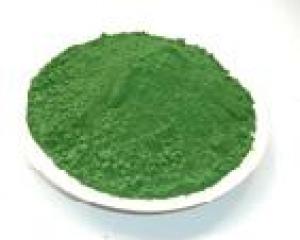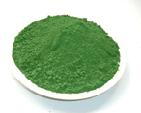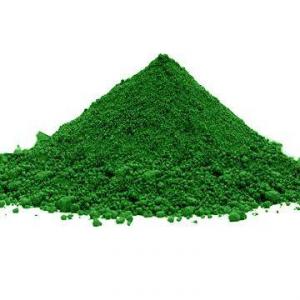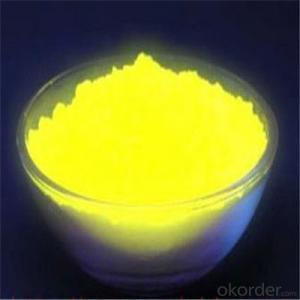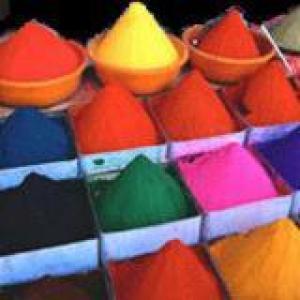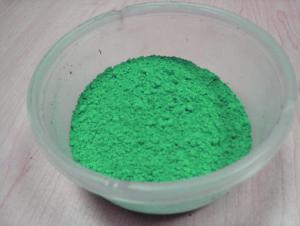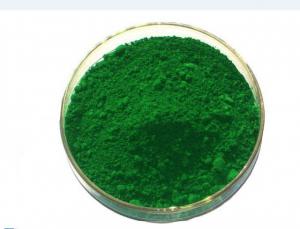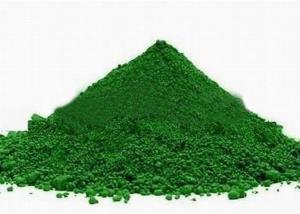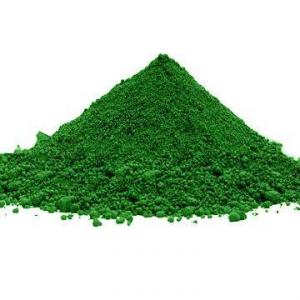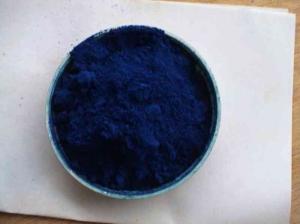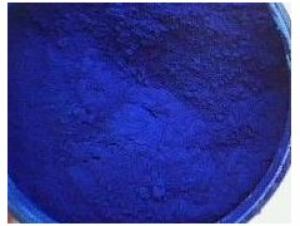Inorganic Green Pigments Chrome Oxide Green Abrasive Grade
- Loading Port:
- China Main Port
- Payment Terms:
- TT or LC
- Min Order Qty:
- 1 Metric Ton m.t.
- Supply Capability:
- 8000MT Per Year m.t./month
OKorder Service Pledge
OKorder Financial Service
You Might Also Like
Production Details Of Chrome Oxide Green :
1. Product Name: Chrome Oxide Green
2. Molecular Formula: Cr2O3
3. HS Code: 2819900000
4. CAS No. : 1308-38-9
5. Appearance: green powder
6. Specifications: (Quality Standard: HG/T 2775-1996)
Packing Details Of Chrome Oxide Green :
25 kg/ pp bag , or kraft bag or as your requirements .
Usage Of Chrome Oxide Green Powder :
Mainly used in paint, glass, ceramics, building materials colorants, printing ink, metal polishing, smelting metal chromium, fire-proof material, etc.
TDS of Chrome Oxide Green
Grade | OXA-0 | OXA-1 | OXA-2 |
Appearance | Green Power | ||
Cr2O3/% ≥ | 99 | 99 | 98 |
Moisture/% ≤ | 0.15 | 0.15 | 0.15 |
Water Soluble/% ≤ | 0.2 | 0.2 | 0.5 |
Polishing Force/[mg/(min.cm2)] ≥ | 0.2 | 0.1 | 0.3 |
Polished Surface Roughness/μm ≤ | 0.100 | 0.20 | 0.80 |
Note: At present in China, the abrasive standard without grinding performance standards, which cannot be grinding and polishing performance evaluation. But according to your needs or our experience to agreed.
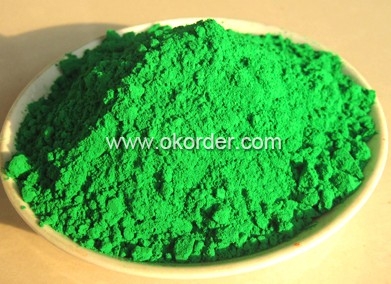
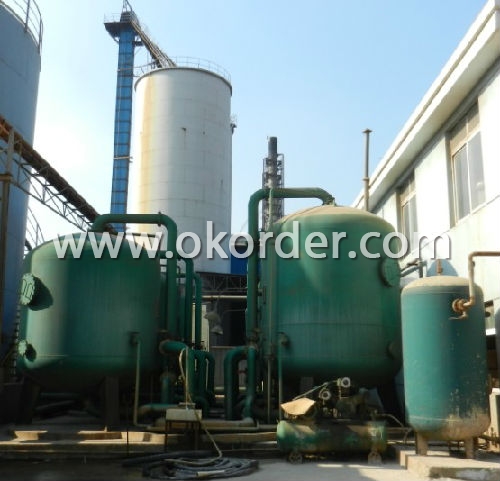

- Q: do all leaves extract contain the same pigments??why?
- Absolutely not. Leaf pigments, just to name a few, may include chlorophyll, carotenes, lutein, anthocyanins. Not only will pigment content vary between plant species, but pigment content will vary in individual plants seasonally.
- Q: like what's the definition relating to sunlight
- Pigments are substances which are used familiarly to create pictures and printings. Pigments give an object a color when in a field of incident white light. Pigments themselves absorb a set of incident colors of light and reflect all others. When multiple pigments are mixed, their ability to absorb colors is added, such that their ability to reflect colors is subtracted.
- Q: okay so I have always used all the cheap makeup and I am sick of it! I was wondering if mac pigments will give me a lot of color without having to use half of the container. Most eyeshadows look nothing like they are supposed to on me. they are like 100 times lighter. I have seen beautiful things done with the pigments but they look like they could get everywhere really easy. will they give me vibrant color without getting all over?
- *~...Welcome...It Won't Be Long Til U Become A MAC Addict. Hehe. Well Loose Eyeshadows Can Get Very Messy, So I Suggest Using A Primer Or An Eyeshadow Base When You Use The Pigments. The Pigments Will Last Longer And The Color Will Be More Vibrant. =) Trust Me, Once You've Tried MAC You'll Love It.... Also, If You Like The Pigments, May I Recommend Beauty From the Earth...They Have Great Color Selections It's Cheaper.... Enjoy!
- Q: I have been looking over the internet and have yet to find the details I need. Such as the function and development of Pigments.
- The most important characteristics of pigments are: 1. They impart a colour to the medium to which they are applied. Remember that you can get white pigments, titanium dioxide, and black pigments, carbon black is typical. The pigments impart a colour merely by their presence , they are mostly chemically inert.They need some binder to fix them to the substrate. 3.They are insoluble in the carrier in which they are processed. 4. Pigments can be inorganic or organic, but the majority have a metal in their structure. 5. Pigments can occur naturally, but synthetically produced pigments to precise standards are by far the most used in industry. 4. In contrast to this, colourants that dissolve in the medium in which they are processed are called dyes or dyestuffs. 5.Dyes are by and large purely organic in structure, and do not contain metals in their chemical formulation. 6. Dyes undergo a chemical reaction with the substrate which they colour. 7. There is also a third type of product called an extender or filler. In the surface coating industry clays, calcium carbonate, etc fill this role. They do not add any colour to the paint, they become transparent in the paint binder medium, because of their low refractive index. They add body to the paint.
- Q: How are plant pigments like teammates on a sports team? And What is the goal of their teamwork??
- WELL to be exact cuvette 2: to observe the role of photosynthesis with chromatin cuvette 3: to observe the role of photosynthesis with UV rays cuvette 4: to observe the stability of the chloroplasts cuvette 5: to observe the reaction of the H2O synthesis
- Q: i was thinking of this all day long and then i thought of posting this question for you to help me sort it out
- plant pigments are of types---- LUCOPLAST- colourless, found in roots, collect food.,,, CROMOPLAST-- Of difrent colour (not green), in flowers atract insect for polination, in fruits atract animals for seed dispers,,,,CLOROPLAST-- Convert light energy to chemical energy, in leaves and otner parts....
- Q: how to prepare coloured pigments?
- Chemically, pigments fall into a number of large groups, but these are often arbitrarily divided into two major groups. The first group comprises pigments that contain nitrogen; it includes hemoglobins, chlorophylls, bile pigments, and dark-colored pigments called melanin, widespread in many animal groups and the chemical that is responsible for variations in the color of human skin. Related to melanins are the indigoids, of which the well known plant pigment indigo is an example. Riboflavin, which is also known as vitamin B12, is one of a number of pale yellow to green pigments that are produced by several plant groups. The second group is formed of pigments without nitrogen. Carotenoids are members of this group, as are the important plant pigments called flavonoids. In leaves, flavonoids selectively admit light wavelengths that are important to photosynthesis, while blocking out ultraviolet light, which is destructive to cell nuclei and proteins. Flavonoids are also important in flower color, in particular providing red and blue pigments. Bright fall colors are produced by the conversion of colorless flavonoids, called flavonols, into colored forms, called anthocyanins. Quinones provide many yellow, red, and orange pigments, including several useful dyes derived from insects that feed on plants containing the quinones. Cochineal, for example, is a red pigment obtained from the fat cells of scale insects that feed on cactus plants.
- Q: Can somebody answer this in AP BIO language please
- A pigment molecule absorbs at specific wavelength(s), meaning that when light of a specific wavelength is incident to the molecule only certain wavelengths are absorbed while others are transmitted. The spectrophotometer emits monochromatic light (light of only one wavelength) which passes through the pigment molecule and a detector determines the amount of light that is either absorbed or transmitted by the sample. This is done at wavelengths from the UV (180-330 nm) to the visible (330-700 nm) and the light that is either transmitted or absorbed is detected by the spectrophotometer and is able to be graphed with absorbance representing the y-axis and wavelength representing the x-axis. The resultant graph will depict the absorption spectrum of that particular pigment molecule. Hope that helps.
- Q: light absorption, which pigments are involved?
- All photosynthetic organisms contain one or more organic pigments capable of absorbing visible radiation, which will initiate the photochemical reactions of photosynthesis. The three major classes of pigments found in plants and algae are the chlorophylls, the carotenoids and the phycobilins. Carotenoids and phycobilins are called accessory pigments since the quanta (packets of light) absorbed by these pigments can be transferred to chlorophyll. Chlorophylls chlorophyll a - present in all higher plants and algae chlorophyll b - present in all higher plants and green algae chlorophyll c - diatoms and brown algae chlorophyll d - red algae (chlorophyll a is present in all photosynthetic organisms that evolve O2.) Chlorophyll molecules contain a porphyrin 'head' and a phytol 'tail'. The polar (water-soluble) head is made up of a tetrapyrrole ring and a magnesium ion complexed with the nitrogen atoms of the ring. The phytol tail extends into the lipid layer of the thylakoid membrane. Carotenoids (carotenes and xanthophylls) Carotenes: -carotene - higher plants and most algae $-carotene - most plants some algae xanthophylls: luteol, fucoxanthol and violaxanthol Carotenoids contain a conjugated double bond system of the polyene type (C-C=C-C=C). Energy absorbed by carotenoids may be transferred to chlorophyll a for photosynthesis. Phycobilins (found mostly in red and blur-green algae): phycoerythrin phycocyanin allophycocyanin )
- Q: i also need the color they are links would be great if you know a good one
- anthocyanis Xanthocyanins These are the reds and yellows you see in the fall when the green leaves turn colors
1. Manufacturer Overview
| Location | Liaoning, China |
| Year Established | 1960 |
| Annual Output Value | Above US$ 100 Million |
| Main Markets | 20.00% North America 20.00% South Asia 10.00% Middle East 10.00% North America 10.00% Northern Europe 10.00% South Asia 10.00% Western Europe 5.00% Africa 5.00% Eastern Europe |
| Company Certifications | ISO9001:2000 |
2. Manufacturer Certificates
| a) Certification Name | |
| Range | |
| Reference | |
| Validity Period |
3. Manufacturer Capability
| a) Trade Capacity | |
| Nearest Port | Dalian Port |
| Export Percentage | 41% - 50% |
| No.of Employees in Trade Department | 10-20 People |
| Language Spoken: | English; Chinese; |
| b) Factory Information | |
| Factory Size: | Above 10,000 square meters |
| No. of Production Lines | Above 6 |
| Contract Manufacturing | design and manufacture service offered. |
| Product Price Range | High; Average |
Send your message to us
Inorganic Green Pigments Chrome Oxide Green Abrasive Grade
- Loading Port:
- China Main Port
- Payment Terms:
- TT or LC
- Min Order Qty:
- 1 Metric Ton m.t.
- Supply Capability:
- 8000MT Per Year m.t./month
OKorder Service Pledge
OKorder Financial Service
Similar products
Hot products
Hot Searches
Related keywords
